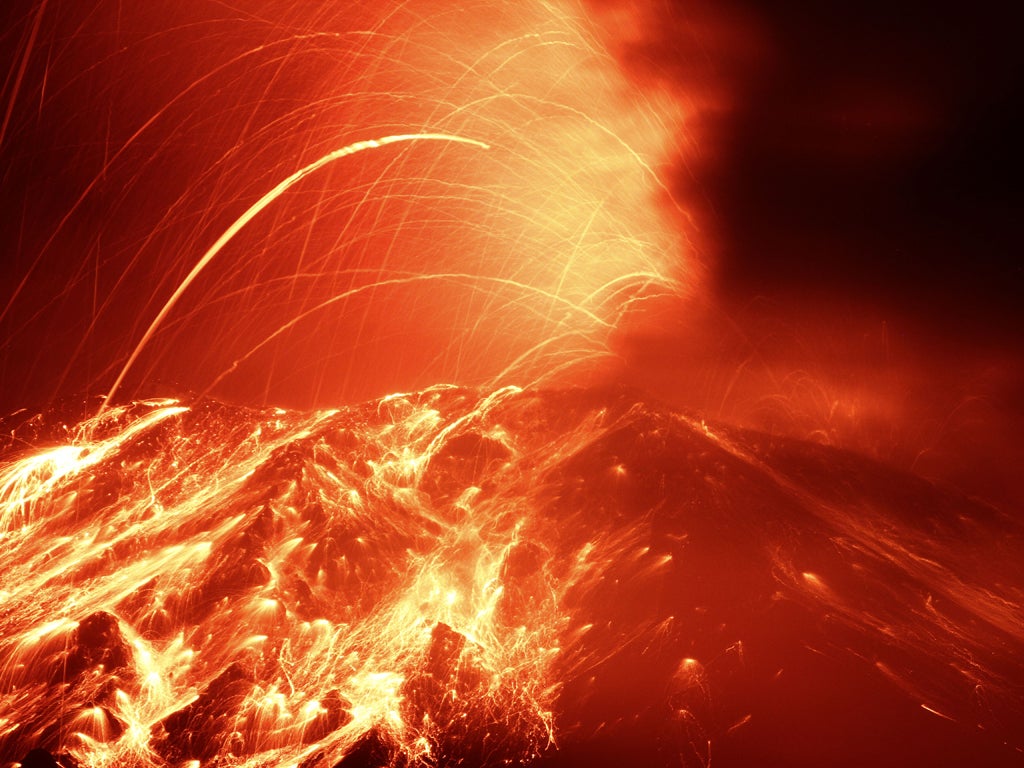Supervolcanoes that could destroy humanity 'may explode sooner than scientists thought'
Huge volcanoes second only to asteroid impact in terms of the devastation they would visit on the earth

Your support helps us to tell the story
From reproductive rights to climate change to Big Tech, The Independent is on the ground when the story is developing. Whether it's investigating the financials of Elon Musk's pro-Trump PAC or producing our latest documentary, 'The A Word', which shines a light on the American women fighting for reproductive rights, we know how important it is to parse out the facts from the messaging.
At such a critical moment in US history, we need reporters on the ground. Your donation allows us to keep sending journalists to speak to both sides of the story.
The Independent is trusted by Americans across the entire political spectrum. And unlike many other quality news outlets, we choose not to lock Americans out of our reporting and analysis with paywalls. We believe quality journalism should be available to everyone, paid for by those who can afford it.
Your support makes all the difference.Super-eruptions from massive volcanoes with the power to destroy humanity could take much less time to form than scientists previously thought, it was reported yesterday.
Supervolcanoes are a huge but little understood natural disaster waiting to happen.
Only a handful of such volcanoes exist in the world, but should one erupt the effect would be devastating.
It is thought the sound of a super-eruption would be heard all over the planet, black rain would fall and the sky would darken across the earth.
They are thought to be second only to a massive asteroid impact in terms of the devastation they would visit on the earth.
The huge volcanoes are fuelled by massive magma pools that build up deep beneath the ground.
They were previously thought to take between 100,000 to 200,000 years to build up enough pressure for the massive eruption to take place.`
However research published in the online journal, Public Library of Science ONE, now suggests the process could take just thousands or even hundreds of years.
The research has found that the giant magma pools may actually only exists for a few thousand or even hundred years before they explode.
The new discovery could prove extremely bad news for Yellowstone National Park in the US which has a magma reservoir six miles beneath it.
The reservoir has been rising at record speeds since 2004.
The park in Wyoming is directly above a huge plume of molten rock around 300 miles across at its highest point - 30 miles beneath the ground.
The build-up of hot and molten rock begins at least 400 miles below the surface of the earth.
The Yellowstone Caldera resembles the lid of a cooking pot, and formed when the last super-eruption in that area happened 600,000 years ago.
Scientists believe it could be due to erupt again.
The supervolcano has erupted a total of three times in the last 2.1 million years.
The most recent supervolcano to erupt was Toba 74,000 years ago in Sumatra.
It was ten thousand times bigger than Mt. St Helens and was a global catastrophe.
Lead scientist Dr Guilherme Gualda, from Vanderbilt University in Nashville, Tennessee, said "Our study suggests that when these exceptionally large magma pools form they are ephemeral and cannot exist very long without erupting.
"The fact that the process of magma body formation occurs in historical time, instead of geological time, completely changes the nature of the problem."
Join our commenting forum
Join thought-provoking conversations, follow other Independent readers and see their replies
Comments